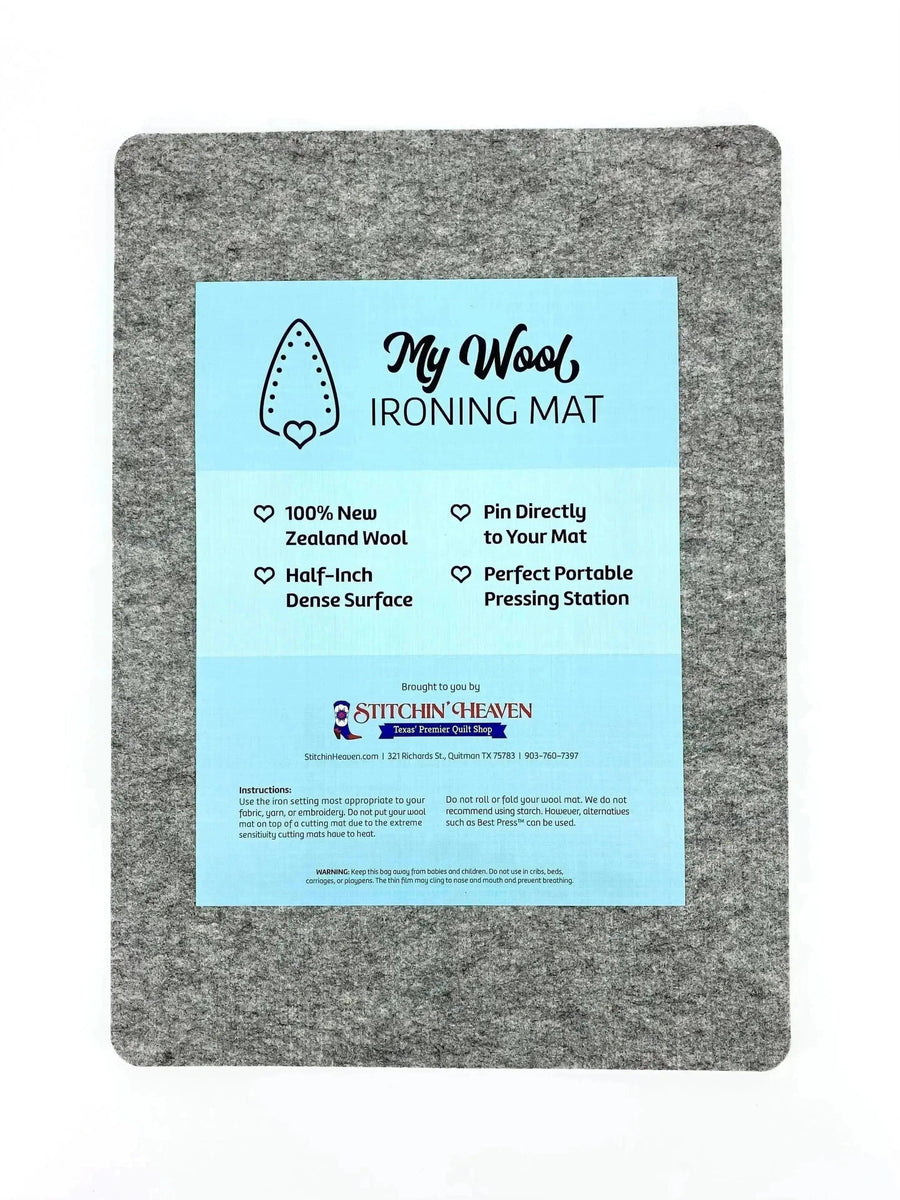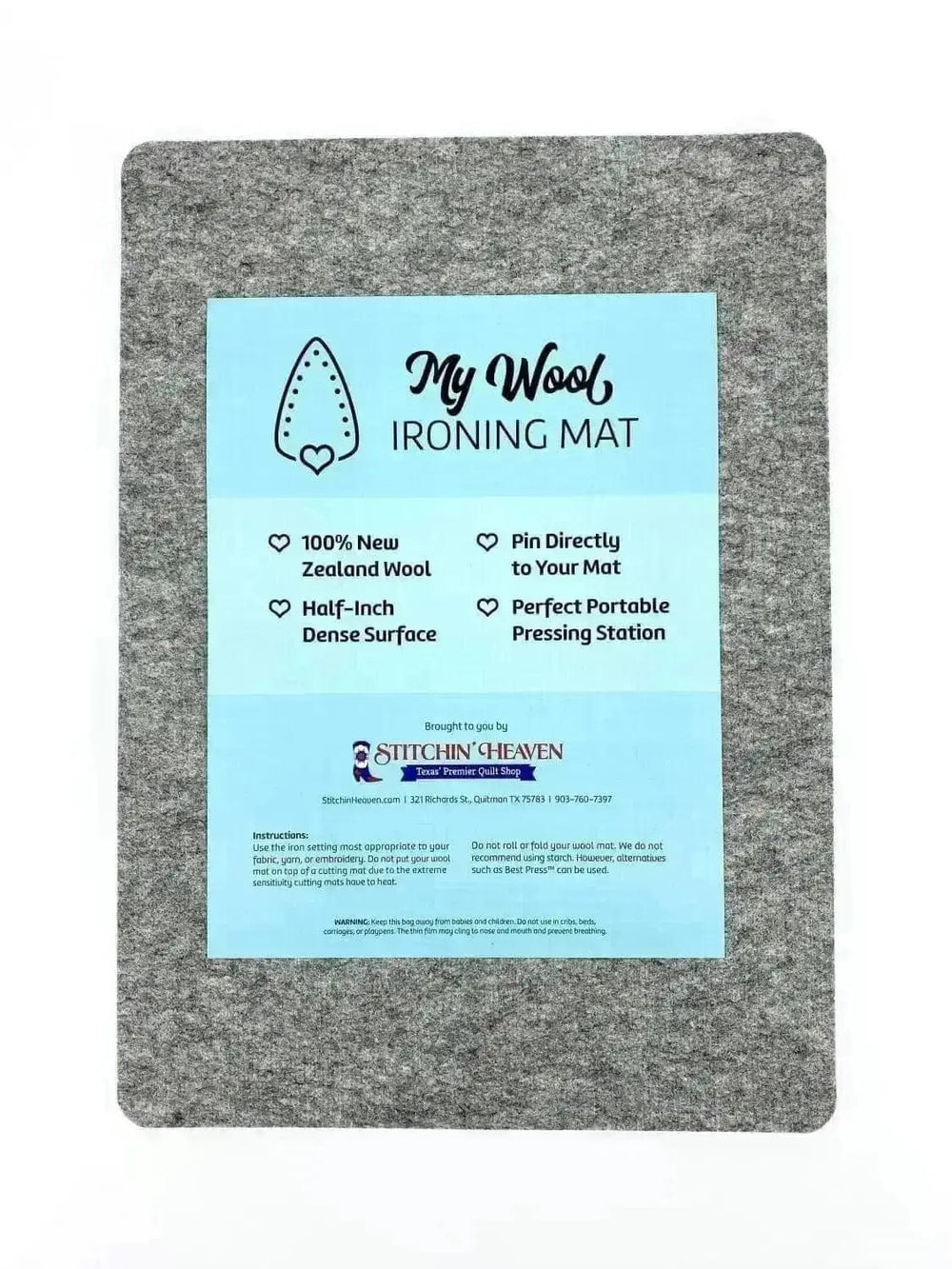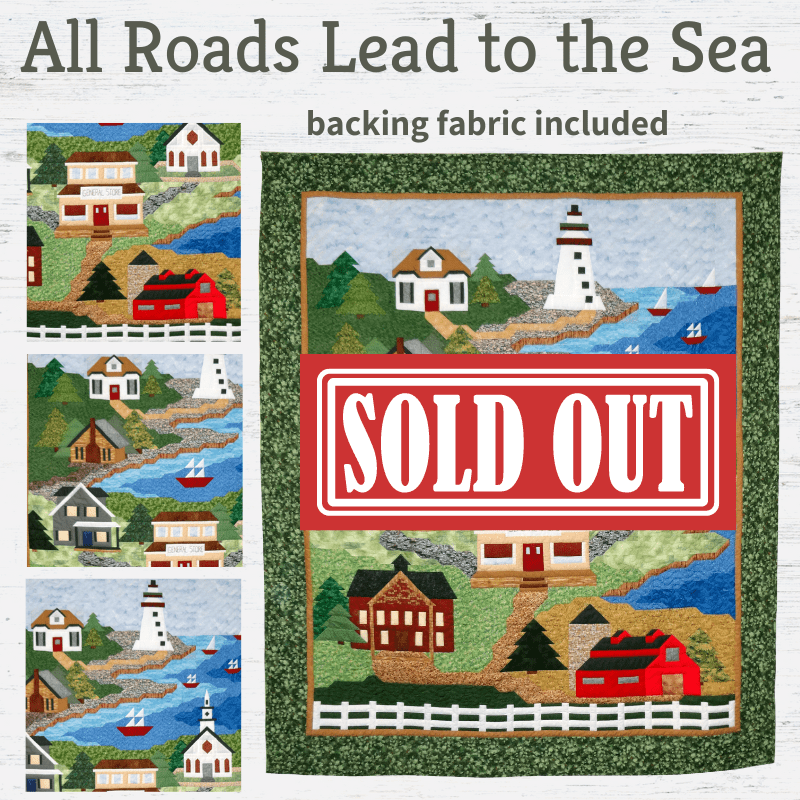Pressing Mats 101
How to Use a Wool Pressing Mat
What Is a Wool Pressing Mat?
Wool pressing mats, also commonly known as wool ironing mats or wool pressing pads, are gaining popularity among serious and recreational quilters alike. A wool pressing mat works more efficiently than a traditional ironing board to help quilters create seams that are crisp and flat while reducing overall pressing time. Often made from New Zealand wool, the surface of a wool pressing pad also grips fabric in place, preventing it from moving, puckering or stretching while pressing or ironing. Because of the importance of pressing seams and the difference it can make in the quality of a finished piece, a wool pressing mat has become an indispensable tool for many quilters. Read on to learn more about how to use a wool pressing mat for quilting.
What Makes Wool Pressing Mats Special for Quilting?
A Wool Pressing Mat Irons Both Sides of the Fabric at the Same Time
Natural wool has several properties that make it a unique and valuable fiber. It's durable, flexible and resistant to fire, mold and mildew. It's also a smart insulator. Through tiny pockets of air within each wool fiber, it can absorb heat and release moisture. The ability to hold heat is especially handy when it comes to pressing quilt seams. Wool pressing mats absorb heat from the iron and reflect the heat back to the fabric, essentially allowing the fabric to receive heat from both sides at the same time. So a wool pressing mat reduces your pressing time, but it also helps create a very crisp, flat seam.
A Wool Pressing Mat Provides a Nonslip Surface
The texture of the wool fiber helps grip fabric in place and prevents the quilt block from shifting, puckering or stretching when it's pressed on a wool pressing mat. This characteristic is especially helpful to quilters, who often work with bias cuts that have edges that can become distorted, such as flying geese or half-square triangles. While dense, the surface of a wool pressing mat also has a little give, meaning it can absorb seams and stitches, helping to create an extra-flat press. Unrelated to the iron, a wool pressing mat is also an excellent tool for blocking and pinning fabric due to its nonslip surface.
A Wool Pressing Mat Is Portable
Wool pressing mats come in a wide range of sizes to suit your personal preferences and space requirements. Many are compact and lightweight, making them easy to transport to your next class or retreat or move throughout your sewing room or workspace. Different sizes are available, ranging from the smaller size 13" x 17" to a larger 17" x 24". The average thickness of a wool pressing mat is about 1/2", which is suitable for most applications, although there are also thinner mats. If space is limited, it's easy to tuck a wool pressing mat out of sight once you've finished your work. Rolling your mat, however, is not recommended when storing it.
How Do Quilters Use Wool Pressing Mats?
Where Should You Use Your Wool Pressing Mat?
You can generally use a wool pressing mat with a dry iron on any surface, such as a tabletop. Most wool pressing mats are thick enough that the heat from an iron won't do damage to the surface below, with a few exceptions. Placing a wool pressing mat on top of a cutting mat isn't recommended because of the sensitivity cutting mats have to heat. In addition, if you press with steam, you should place the mat on a protected surface. Although the wool will absorb the moisture from the steam with the heat, the moisture can make its way through the pressing mat and harm the surface below. Therefore, you should only use a wool pressing mat with steam on a water-resistant surface. You could also put a towel beneath the mat to help protect the surface below. It should be noted that introducing heat and moisture to a wool pressing mat can create an aroma, but this is normal.
Can You Use Starch on a Wool Pressing Mat?
Generally, it's recommended you don't use spray starch with a wool pressing mat. Starch can discolor the surface of your mat or leave a residue on it. Instead, alternatives such as Best Press can be used. Often, however, starch and other sprays are unnecessary because the wool absorbs moisture from the air as heat is applied, helping create a very crisp and flat seam.
How Do You Care for a Wool Pressing Mat?
Can You Wash a Wool Pressing Mat?
If it's necessary to clean your wool pressing mat, most manufacturers recommend washing it by hand with cold water in either a sink or a bathtub. Cleaning it should only require a gentle rinse. The mat can then be laid flat to dry, or you can hang it up to dry. You shouldn't put a wool pressing mat in a washing machine unless it's recommended by the manufacturer.
How Do You Store a Wool Pressing Mat?
You should store your wool pressing mat on a flat surface. If the mat is dry, you can store it on any flat surface. If it's wet, you should allow it to air-dry before storing it on a flat surface. You can also lean it on its edge against a flat surface.
Bottom Line
When it comes to quilting, a wool pressing mat is an excellent alternative to a regular ironing board. A wool pressing mat provides a nonslip surface that absorbs heat, allowing you to iron both sides of your fabric at the same time. It can help you easily and efficiently create seams that are crisp and flat, improving the overall quality of a finished piece.





